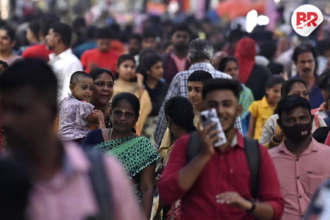
The India Meteorological Department (IMD) has forecasted above-normal rainfall for June, pegging it at 108% of the long-period average (LPA).
The southwest monsoon, which officially arrived in Kerala on May 24—a full eight days ahead of schedule—is now expected to bring 106% of normal rains overall, though Northeast India may receive less than usual.

This could spell relief from scorching summer heat but also raises the chances of urban flooding, crop challenges, and transport delays if cities aren’t prepared.
Take Mumbai, for example. The financial capital was hit with its earliest monsoon ever, recording 295 mm rainfall in May—shattering a 100-year-old record.
Roads turned into rivers, and even the brand-new underground Acharya Atre Chowk Metro station was waterlogged.
The Harbour line trains were disrupted, with over 68 local services cancelled. So no, it wasn’t a cloudburst—but it certainly rained on Mumbai’s infrastructure parade.
Let’s just say the monsoon didn’t knock—it kicked the door open, walked in early, and flooded the living room.
Also Read Worli Metro Station Turns Water Park—Why Is Worli Metro Station Underwater?
Despite the chaos, IMD clarified it wasn’t a cloudburst, but rather an “intense rain spell.” For the record, a cloudburst is over 100 mm of rain in an hour, often causing flash floods. This one didn’t quite qualify—though tell that to commuters stranded waist-deep in water.
What triggers the monsoon’s arrival?
According to IMD’s revised 2016 criteria, three things are needed to declare the onset over Kerala:
- 60% of 14 key stations must report ≥2.5 mm of rainfall for two straight days.
- Consistent westerly winds up to 600 hPa.
- Outgoing Longwave Radiation (OLR) below 200 W/m², indicating solid cloud cover.
Satellite and water vapour imagery also help IMD track cloud movement and moisture incursion.
For the rest of India, North and Central regions are likely to see normal rainfall, which could benefit farmers and reduce power cuts. But Northeast India—usually one of the wettest—may fall short this time.
It’s ironic: we predict monsoons with pinpoint accuracy, yet every year, cities like Mumbai still seem surprised—like someone who forgets their umbrella in June again.
Also Read India Sees Earliest Monsoon Since 2009 as Rains Arrive Early in Kerala, Says IMD












